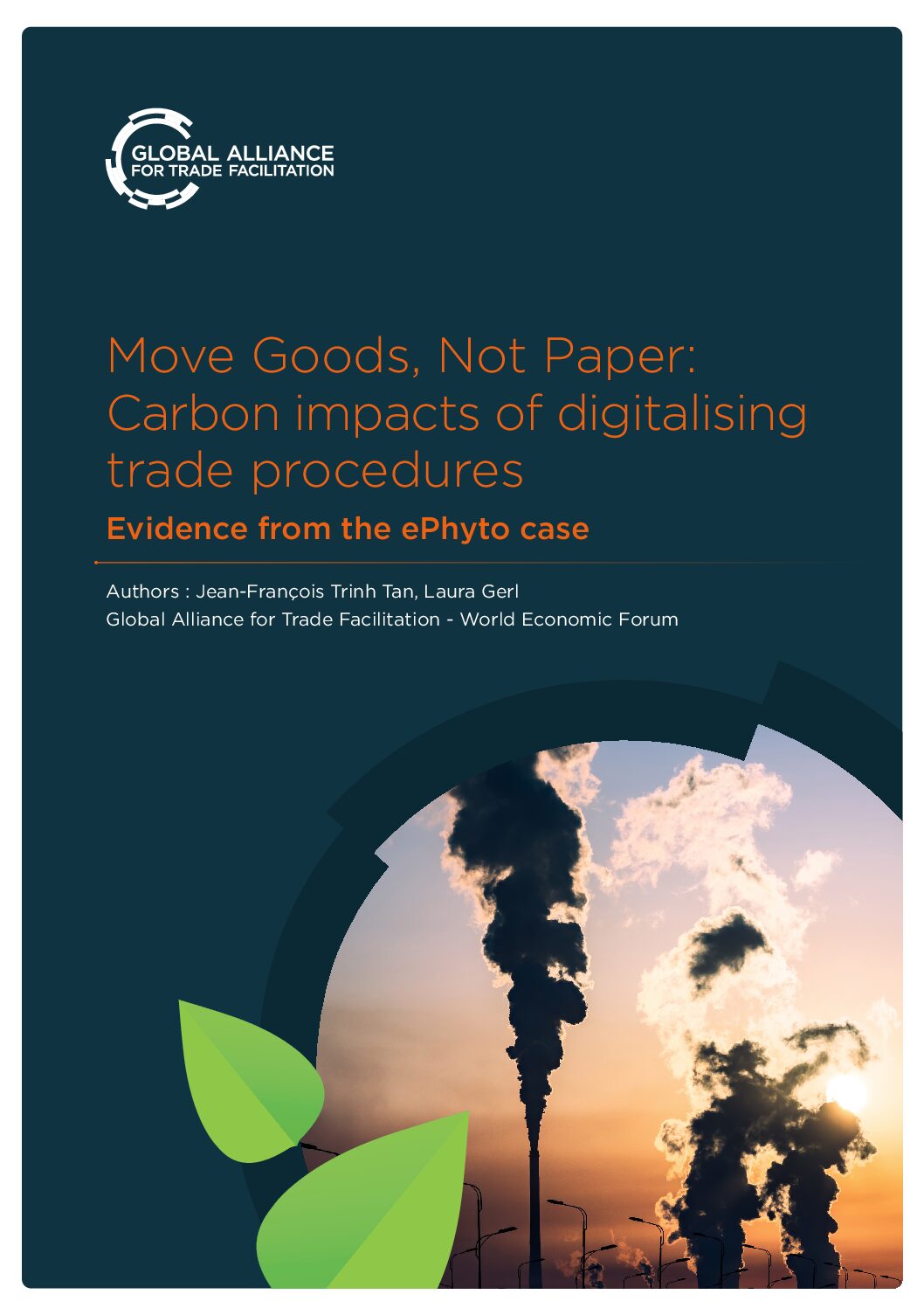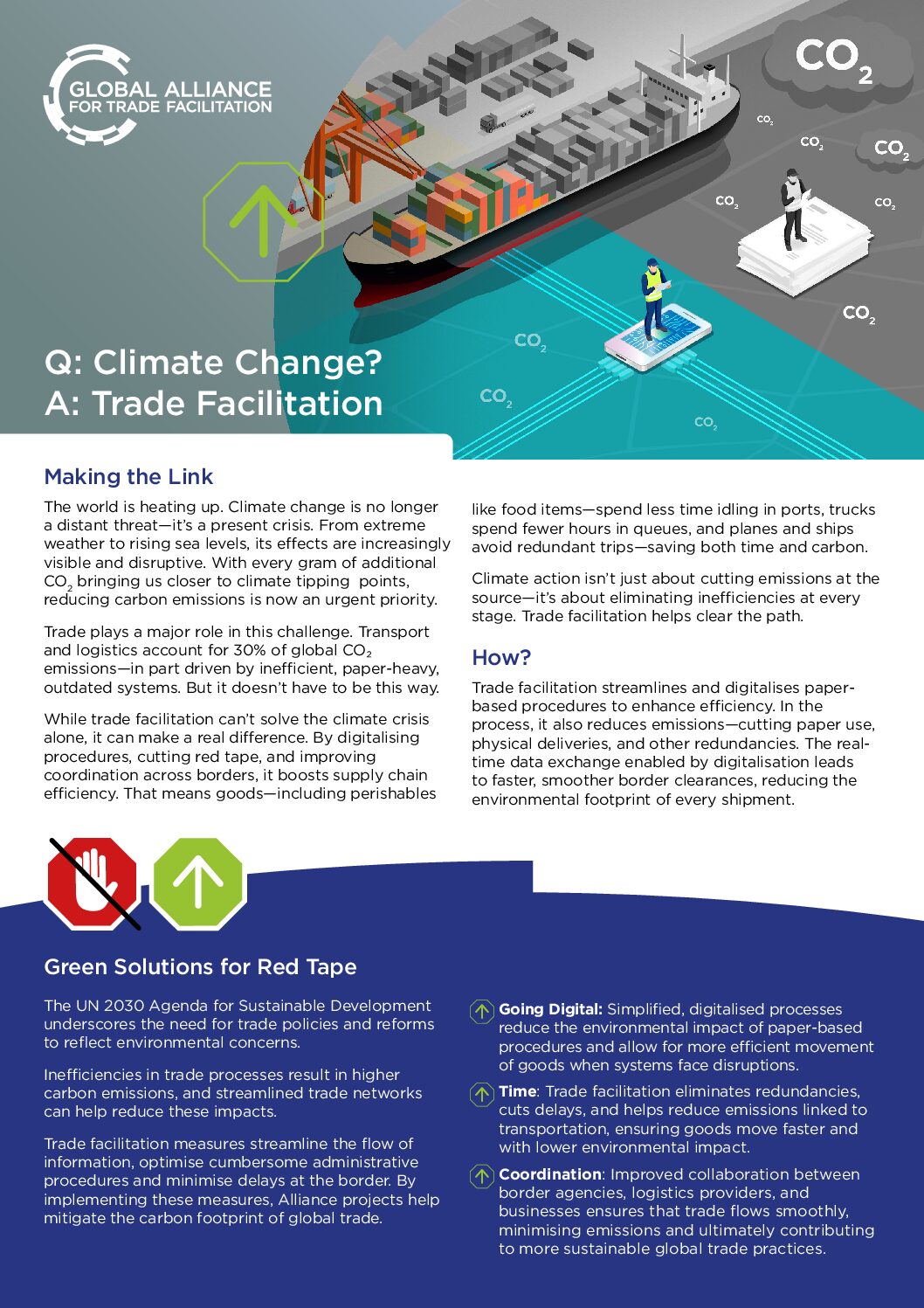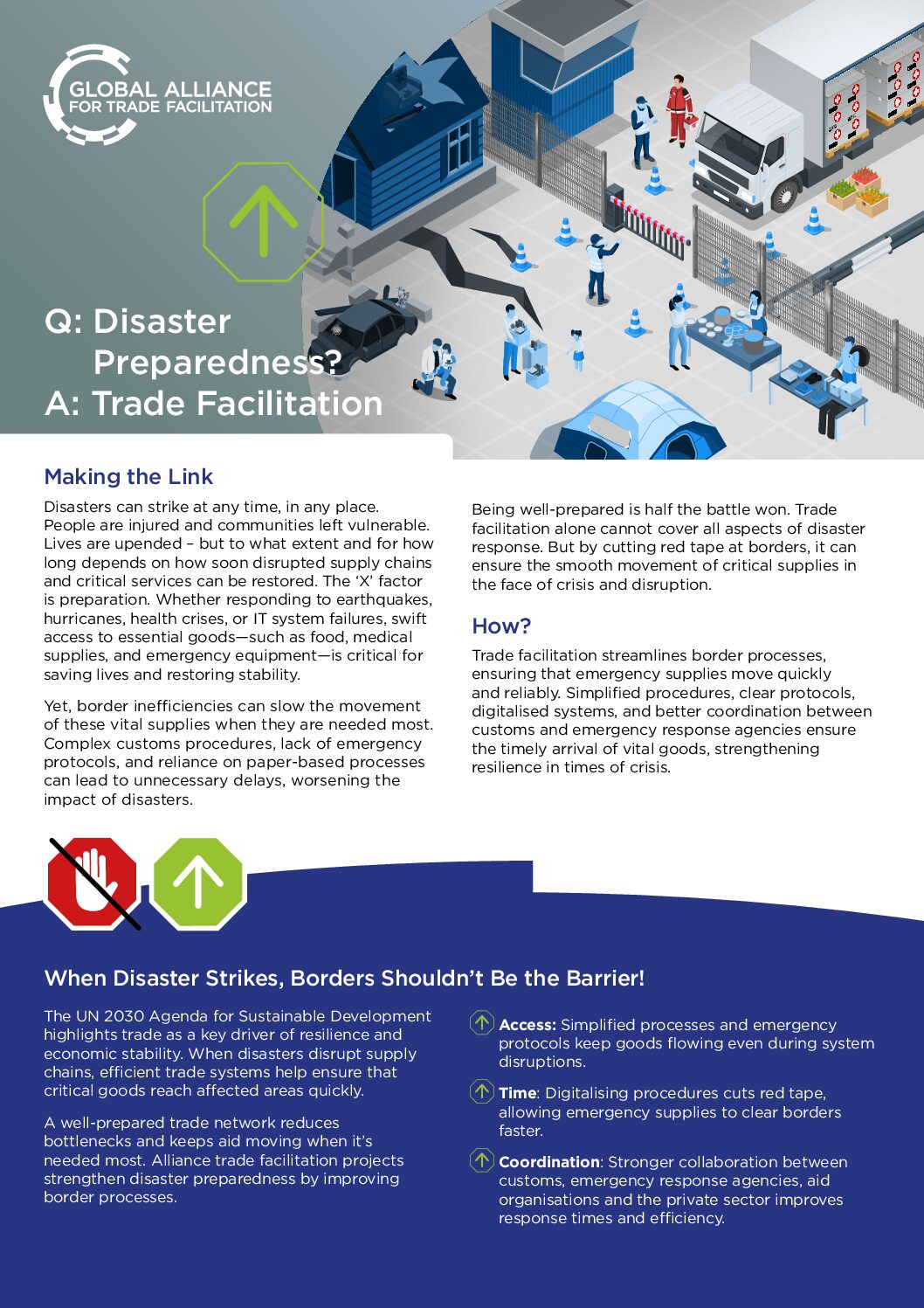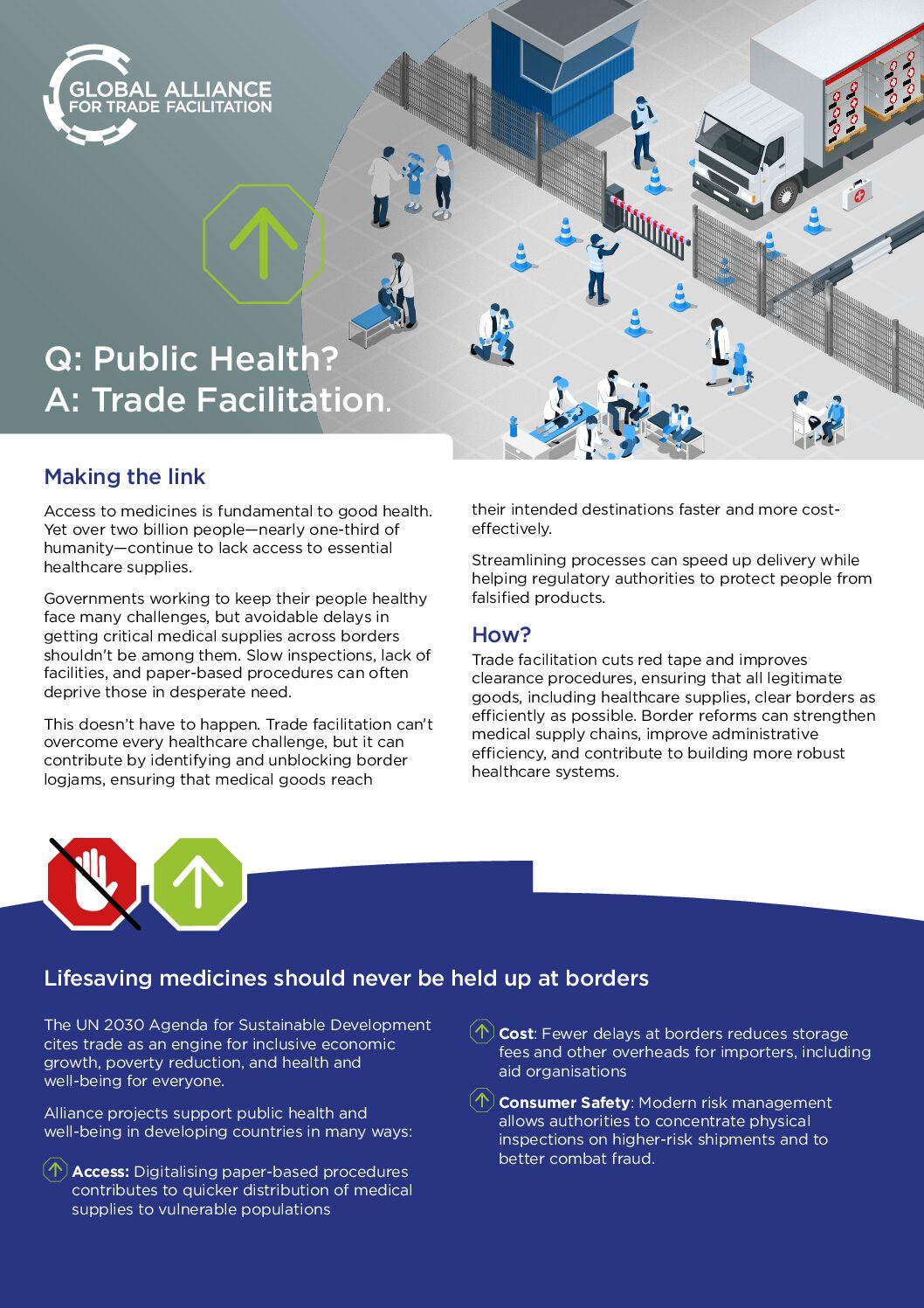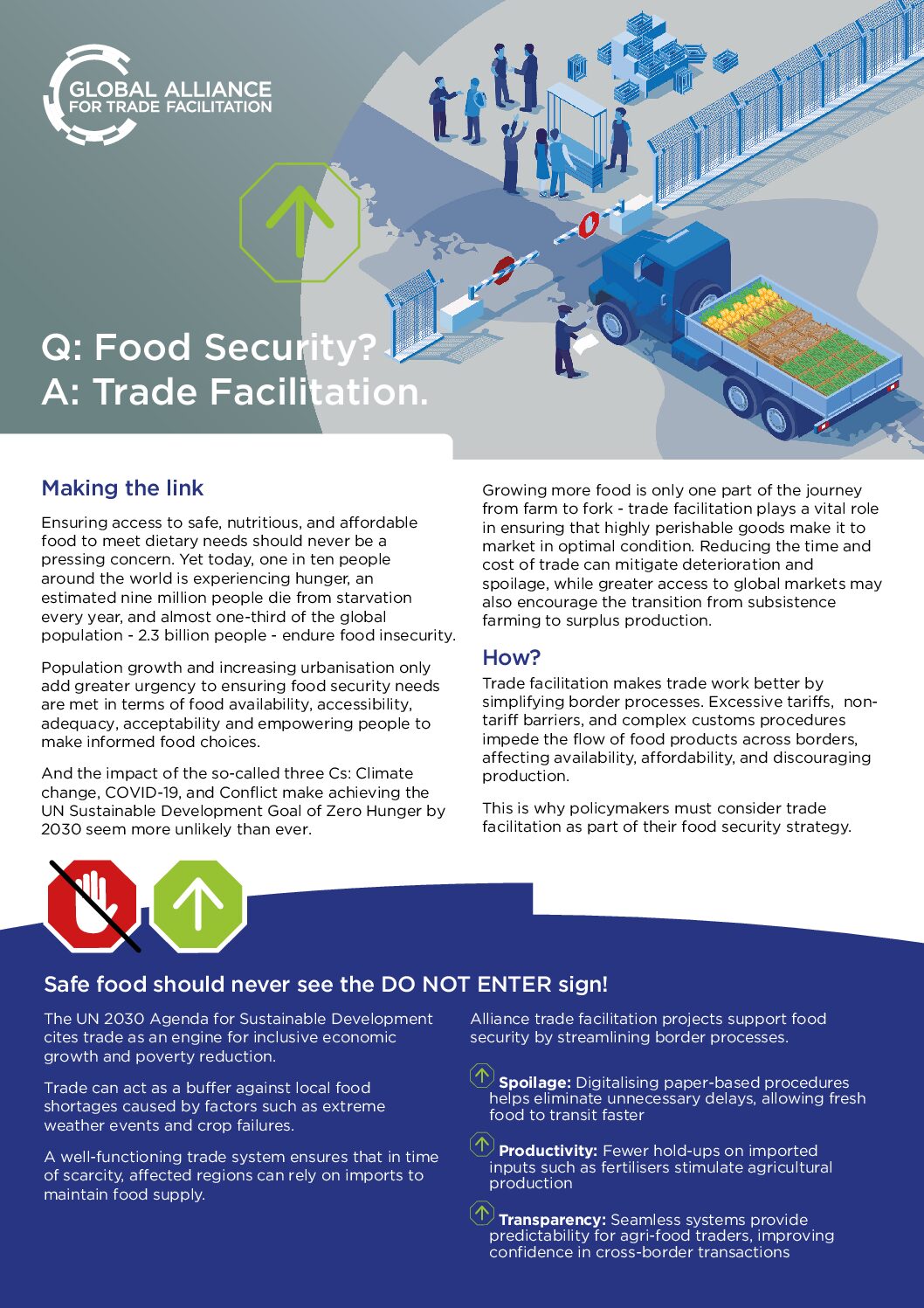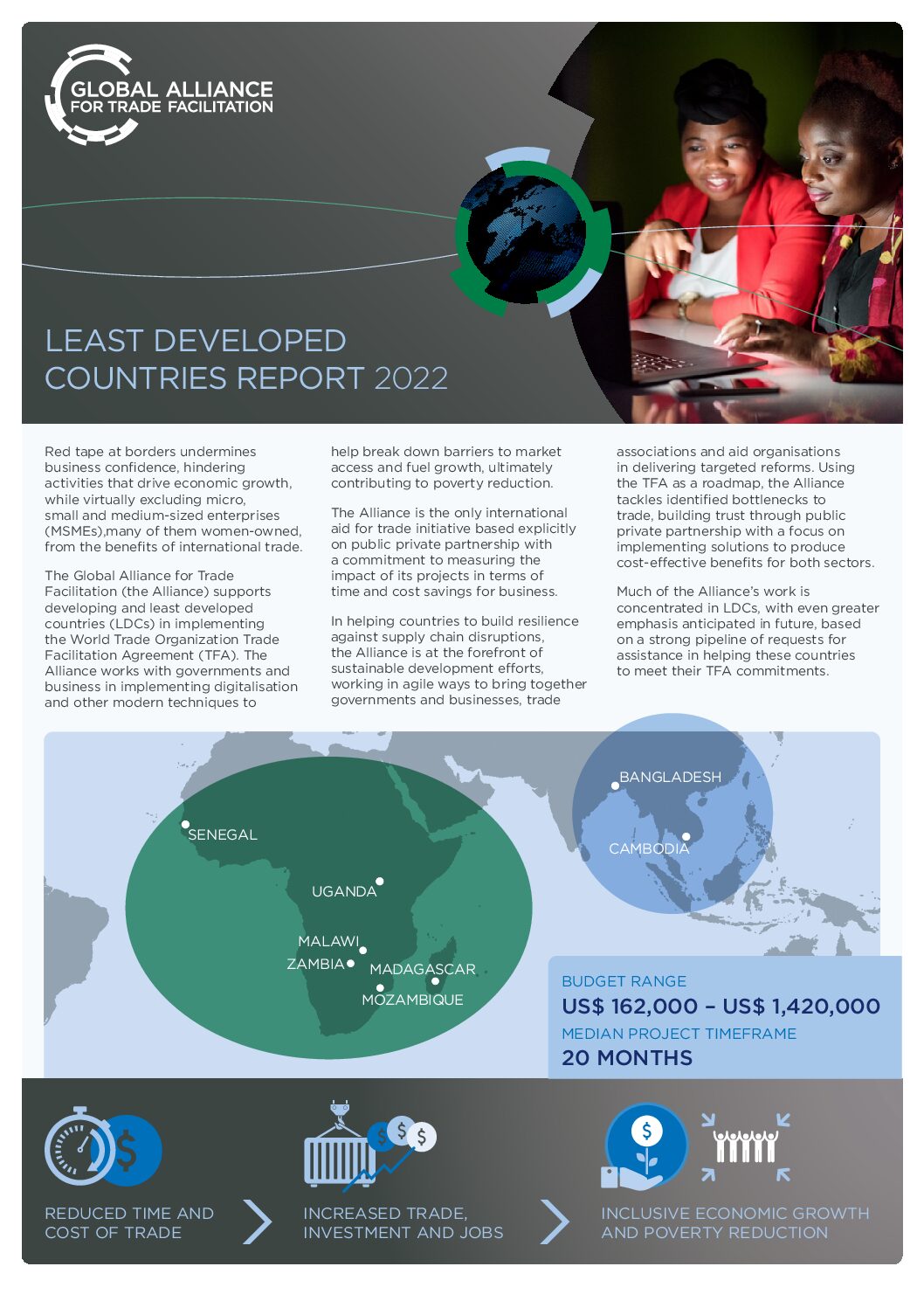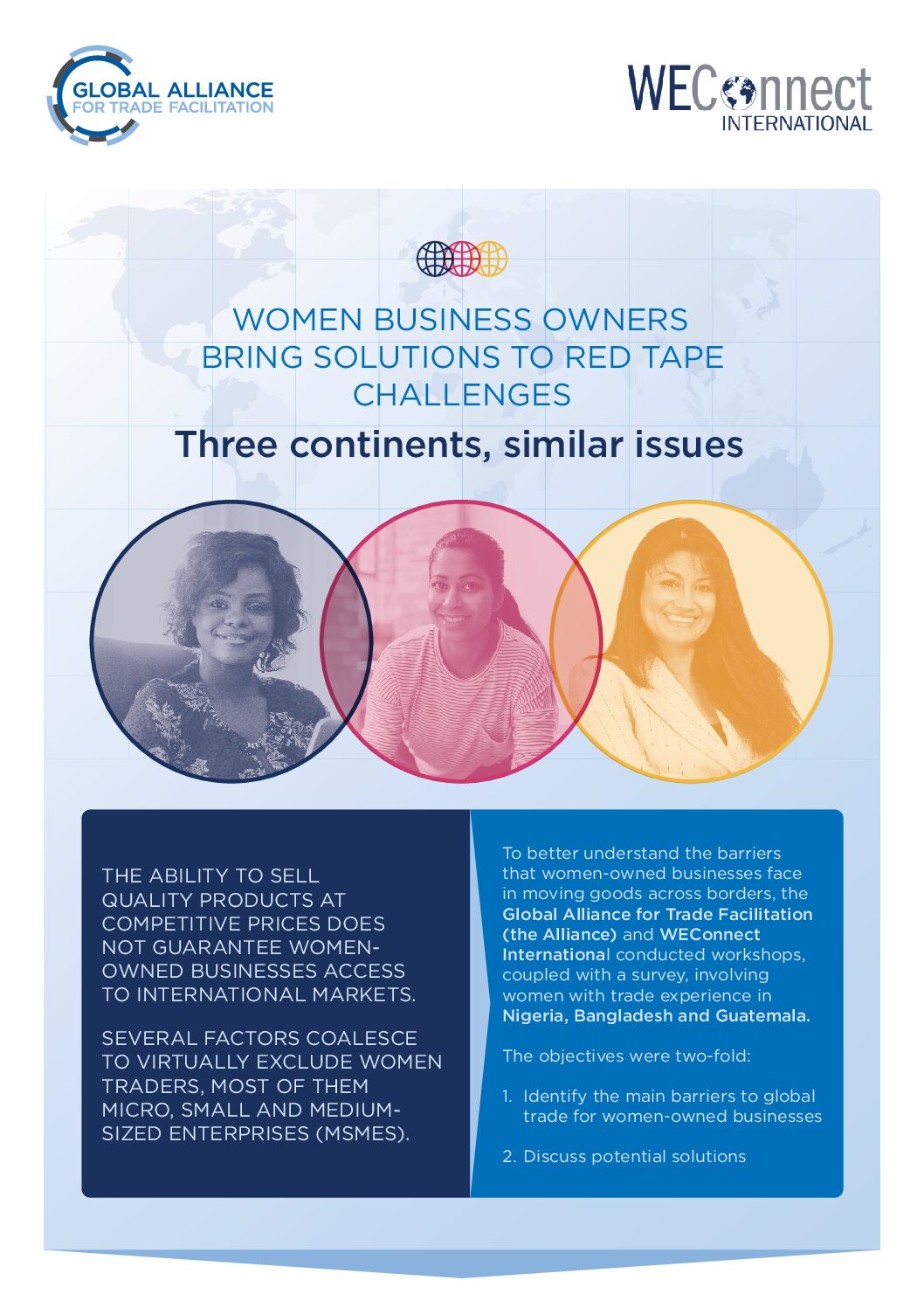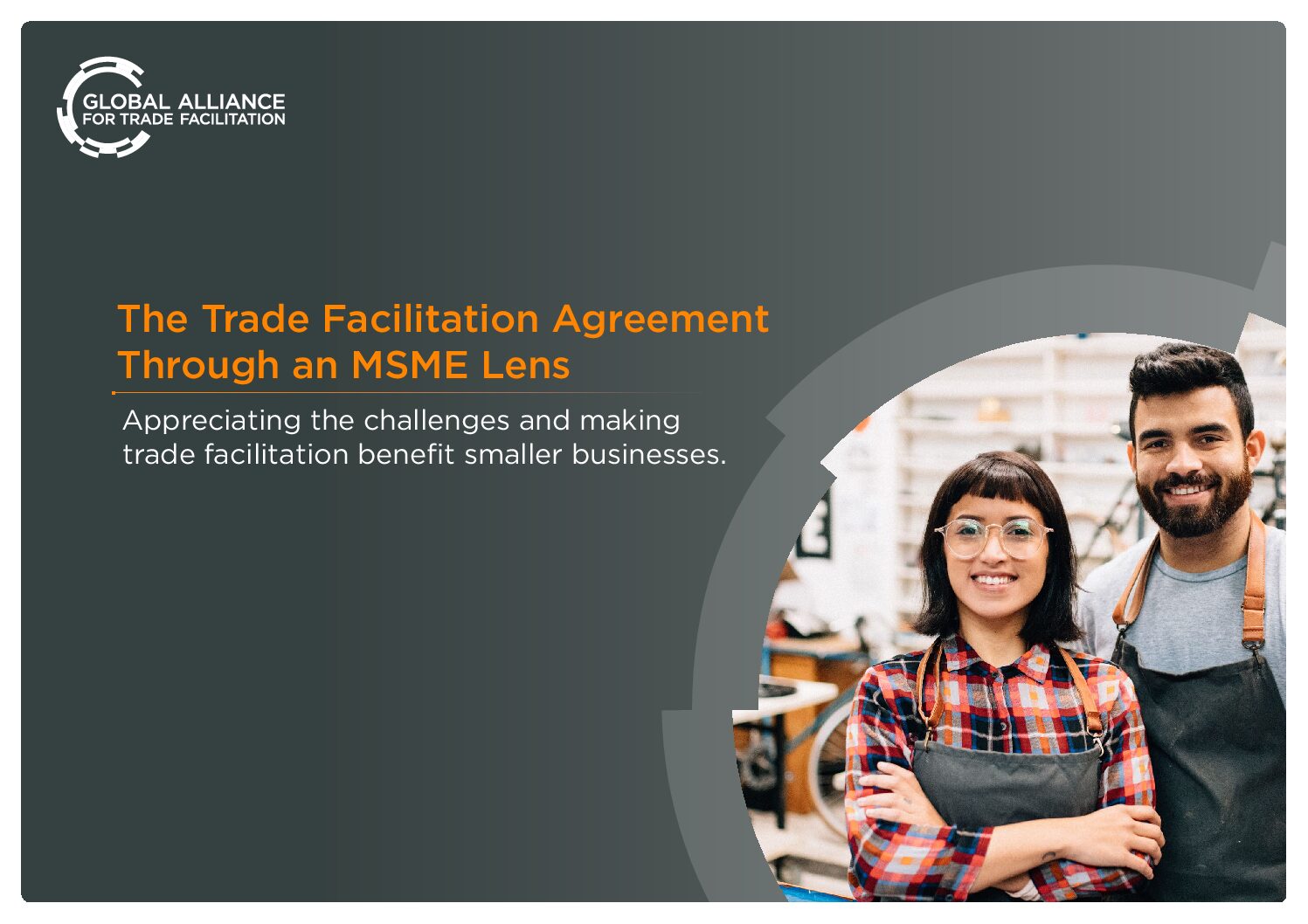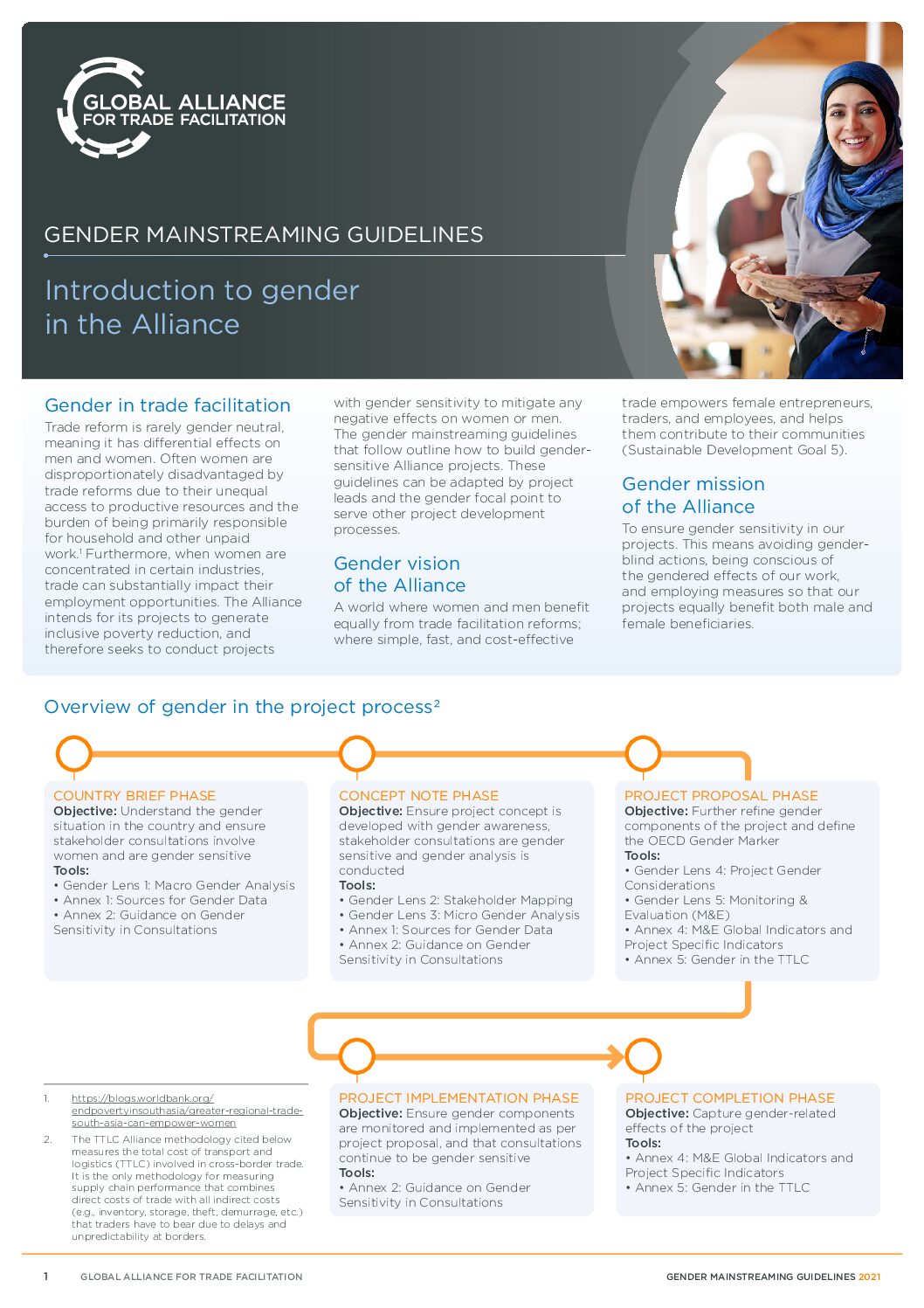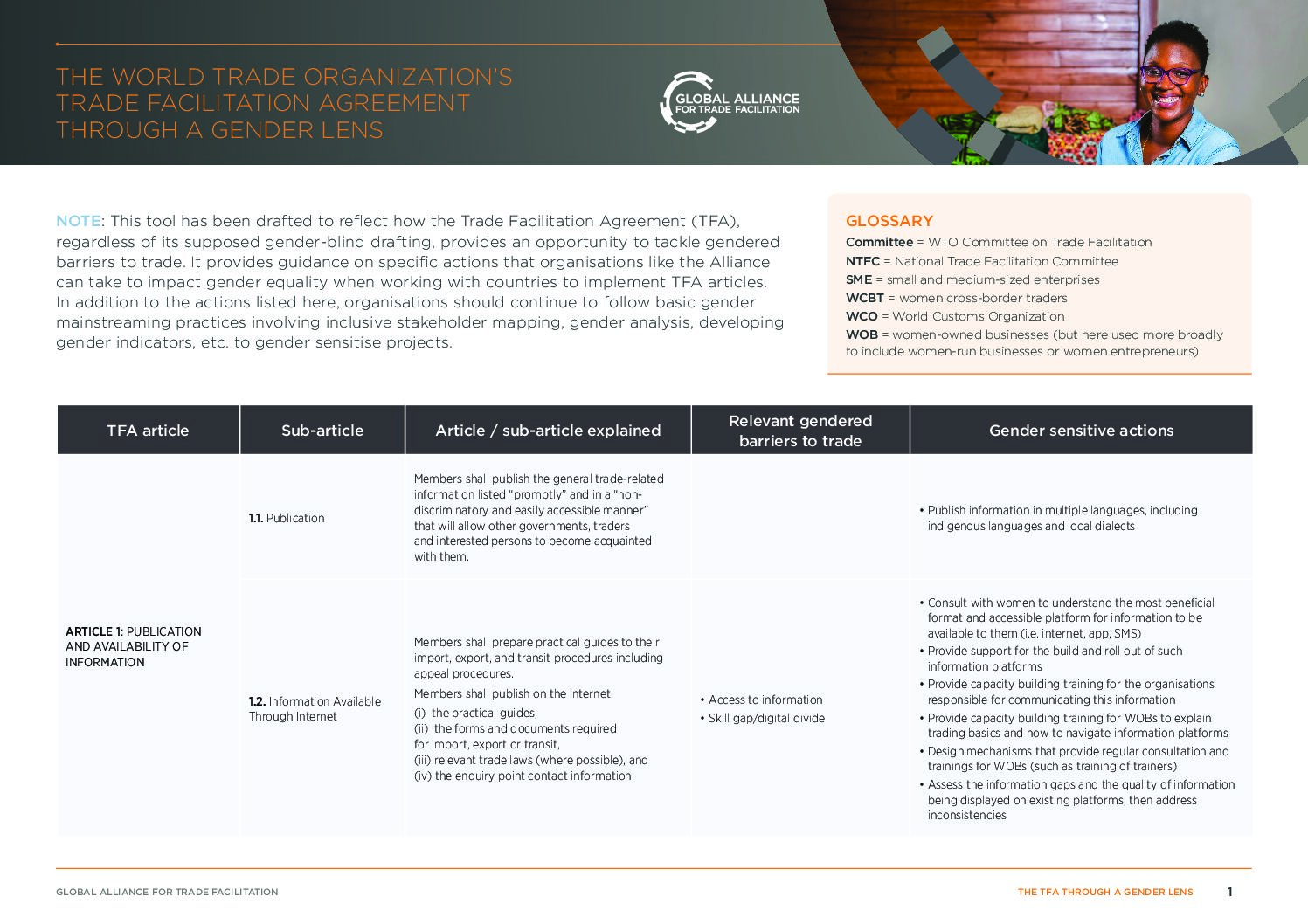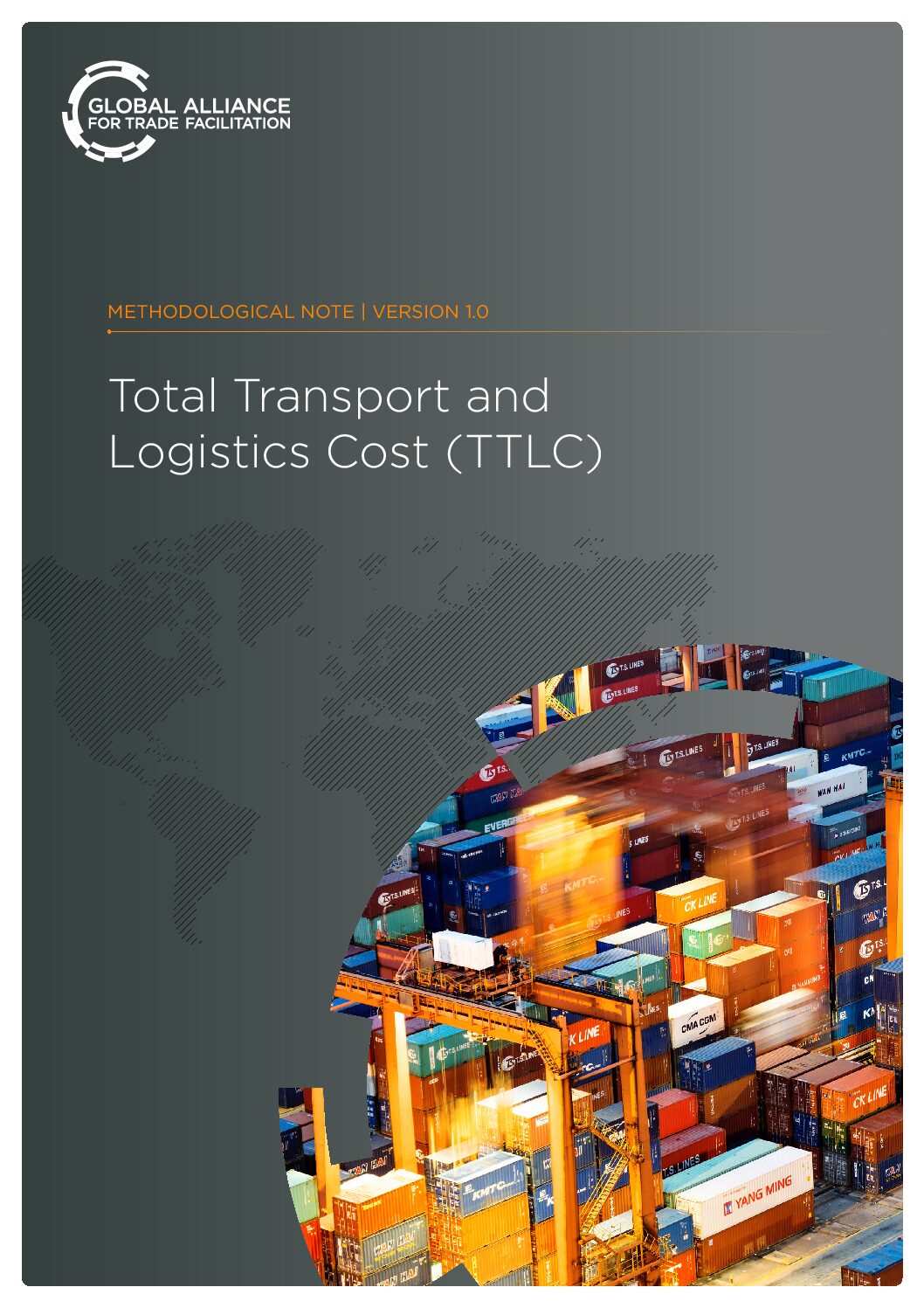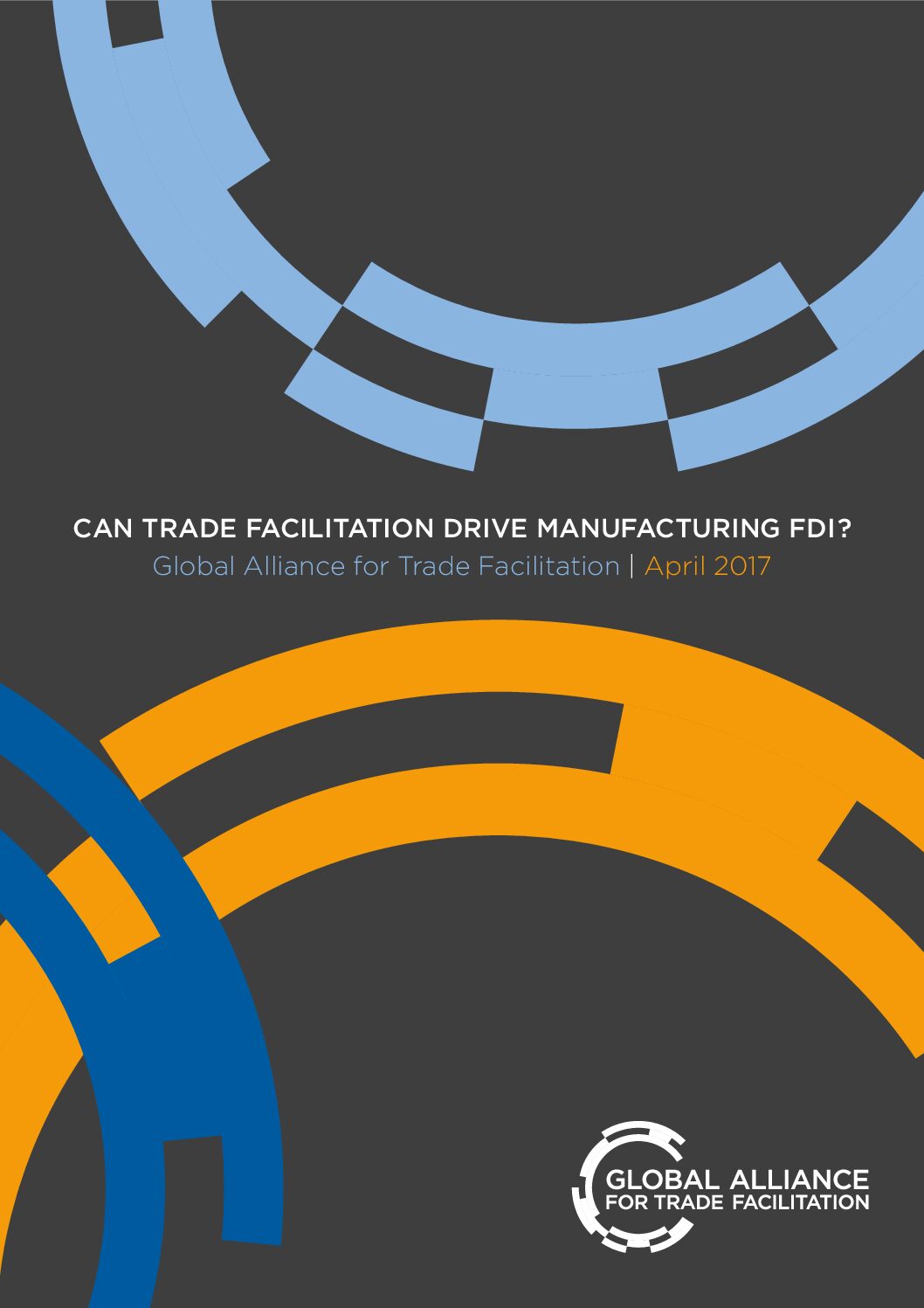
Our Papers
Move Goods, Not Paper: Carbon impacts of digitalising trade procedures
This knowledge paper explores how digitalising trade procedures can cut carbon emissions, using the IPPC ePhyto Solution as a case study. Findings from 10 Alliance projects show that using ePhytos significantly reduces the carbon footprint of the certification process, with cumulative global savings comparable to planting millions of trees. The study highlights how scaling up digital trade solutions not only streamlines border processes but also delivers meaningful environmental benefits.
Trade Facilitation and Climate Change
Climate change is disrupting lives and economies—but trade facilitation can be part of the solution. By cutting red tape and digitalising border processes, it helps reduce global emissions and supports more sustainable trade.
Trade Facilitation and Disaster Preparedness
Disasters can occur unexpectedly and anywhere, causing injuries and leaving communities vulnerable. While trade facilitation cannot address every aspect of disaster response, it can play a crucial role in expediting the delivery of essential supplies.
Trade Facilitation and Public Health
Governments face many challenges in optimising public health, including bureaucratic delays when importing critical medical supplies. Trade facilitation can’t overcome every healthcare challenge but cutting red tape and streamlining border processes can certainly speed up delivery of vital medicines and related equipment.
Trade Facilitation and Food Security
Ensuring access to safe, nutritious, and affordable food to meet dietary needs should never be a pressing concern. Growing more food is only one part of the journey from farm to fork – trade facilitation plays a vital role in ensuring that highly perishable goods make it to market in optimal condition.
Least Developed Countries Report 2022
The Alliance supports developing and least developed countries (LDCs) in implementing the World Trade Organization Trade Facilitation Agreement (TFA). Much of our work is concentrated in LDCs, with even greater emphasis anticipated in future, based on a strong pipeline of requests for assistance in helping these countries to meet their TFA commitments.
Three Continents, Similar Challenges for Women Business Owners
To better understand the obstacles that women-owned businesses in developing and least-developed countries must overcome to take advantage of the opportunities afforded to participants in world markets, the Alliance and WEConnect International conducted a study involving women with trade experience in Bangladesh, Guatemala, and Nigeria.
The Trade Facilitation Agreement through an MSME lens
The Alliance’s Trade Facilitation Agreement Through an MSME Lensprovides practical guidance on actions the Alliance, policy makers, and development practitioners can take to ensure that implementation of the TFA supports MSMEs while presenting an in-depth analysis of the TFA itself and how it tackles MSME-specific challenges to international trade.
Gender Mainstreaming Guidelines
The publication of its Gender Mainstreaming Guidelines represents the Alliance’s determination to not only better understand the hurdles facing women in trade or preventing them from entering global markets, but to refine its own approaches and share its vision as a means to breaking down these seemingly intractable barriers. The guidelines are being applied across its projects to ensure women and men benefit equally from its support to trade reform efforts in developing countries.
The Trade Facilitation Agreement (TFA) through a gender lens
The Alliance’s tool, the WTO’s Trade Facilitation Agreement (TFA) through a gender lens, provides development practitioners and implementors with an in-depth analysis of the TFA Section I Articles from a gender perspective. It shows how the TFA, regardless of its supposed gender-blind drafting, provides an opportunity to tackle gendered barriers to international trade.
Total Transport and Logistics Cost (TTLC)
The Total Transport and Logistics Costs (TTLC) methodology measures the total cost of transport and logistics involved in cross-border trade. It is the only methodology for measuring supply chain performance that combines direct costs of trade with all the indirect costs (e.g. inventory, storage, theft, demurrage…) that traders have to bear due to delays and unpredictability at borders. By estimating the time and costs incurred in completing each step of the import and export supply chains, the TTLC can be used as a baseline tool to identify bottlenecks, estimate the potential returns of trade facilitation reforms, and assess the true impact of trade facilitation reforms on business.
Can trade facilitation drive manufacturing FDI?
This paper examines the relationship between the trade facilitation environment and the level of foreign direct investment (FDI). It highlights that developing economies with stronger trade facilitation environments attract high-value investments, especially in industries such as auto parts and aerospace manufacturing.
Foreign Direct Investment (FDI) has been crucial to the success of manufacturing in emerging economies in East and South East Asia. Here, FDI has been shown to have incredible potential to support job creation by supporting economies’ integration into complex global value chains. For instance, Sri Lanka has attracted over US $1 billion in manufacturing FDI since 2011. This accounted for less than one third of total investments in the country, yet constituted more than two thirds of the total job creation from FDI.

